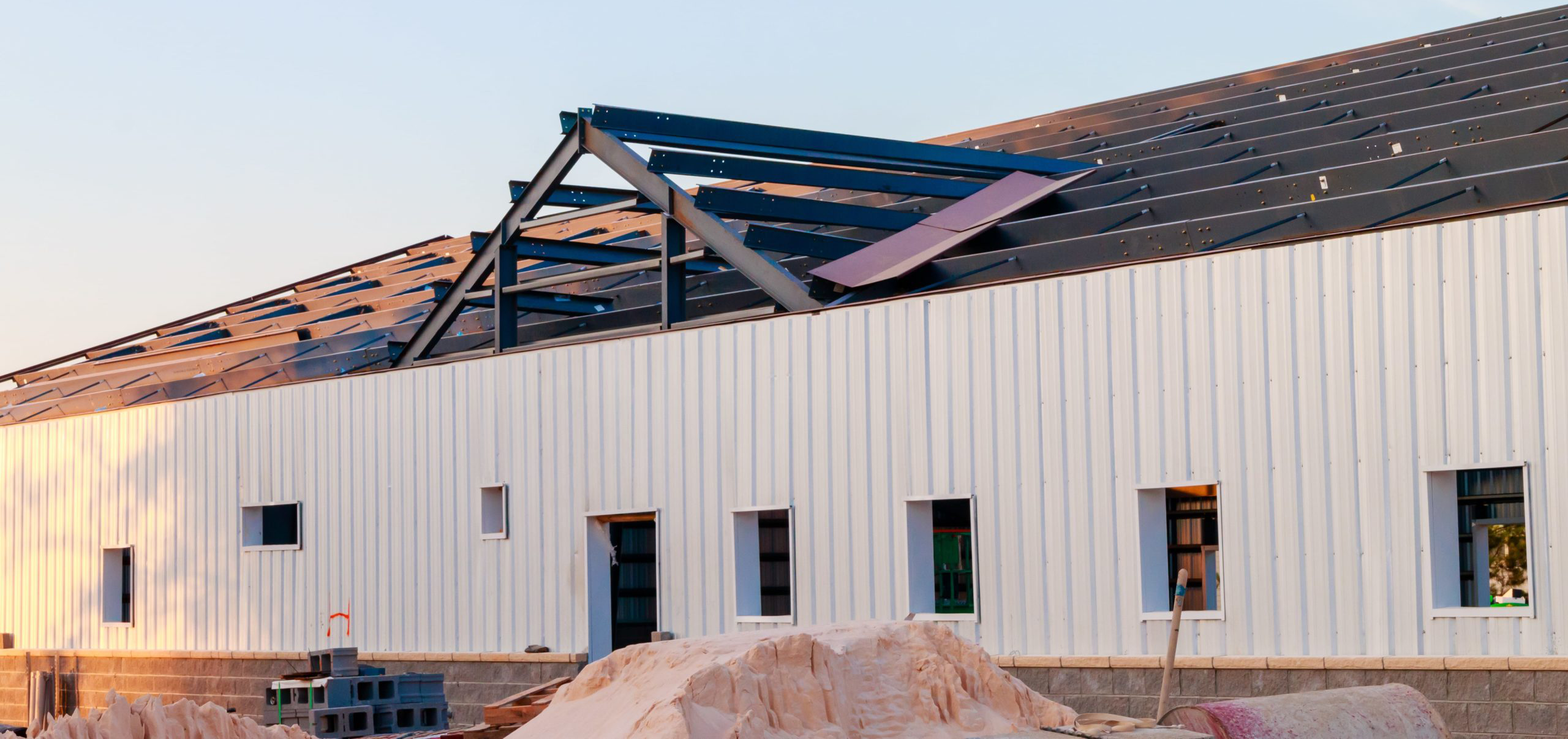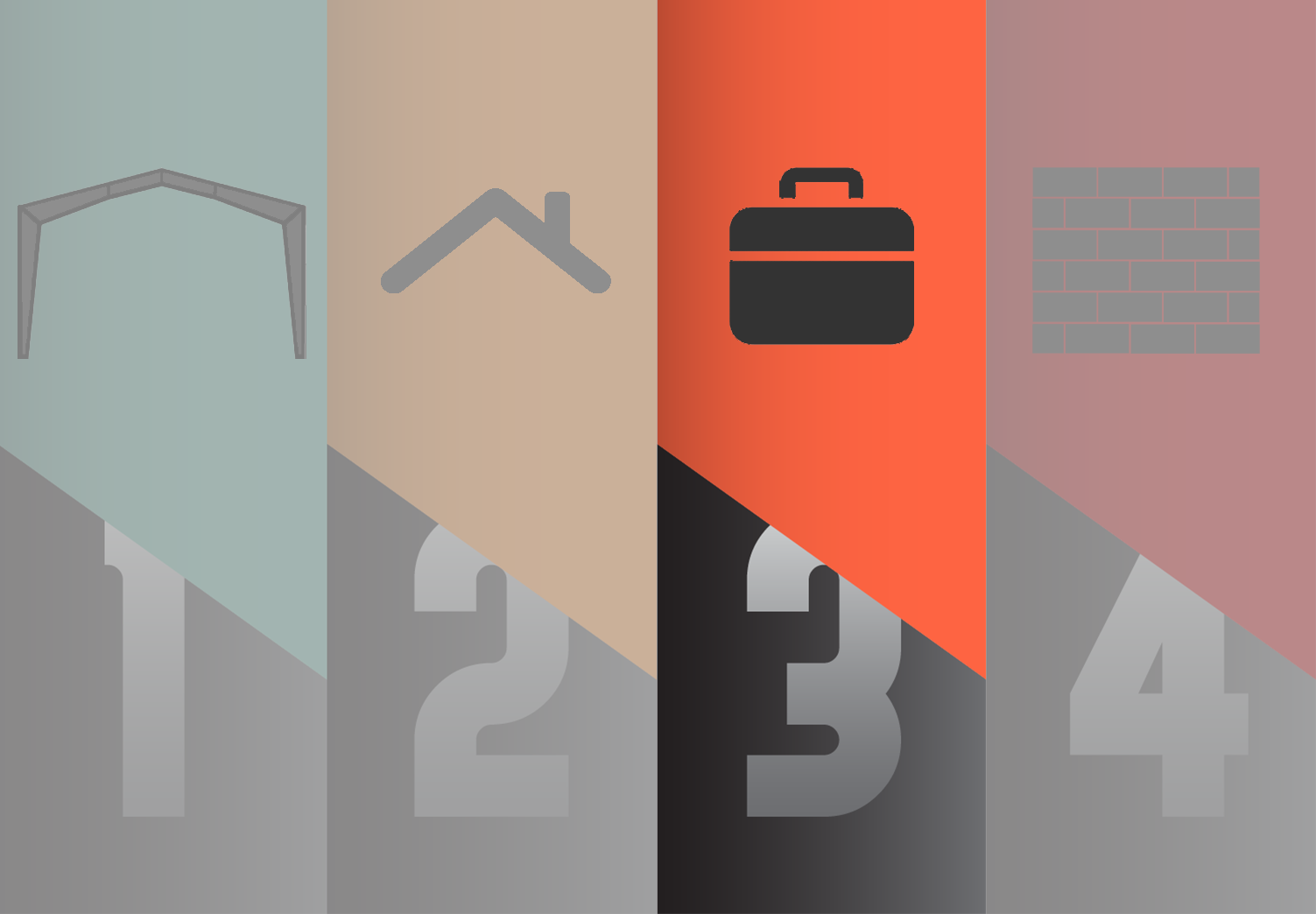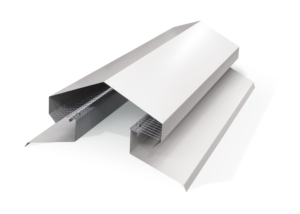
Anatomy of a Steel Building: Accessories Prefab Buildings Can’t Do Without.

Anatomy of a Steel Building: Accessories
One of the most appealing aspects of a prefabricated metal building is the host of accessory options to choose. From bikes to trains to video games, the range and function of accessories for prefabricated metal buildings are almost endless. In this, the third in a four-part blog series of the anatomy of a steel building, we will discuss the main accessories most prefabricated metal buildings can’t do without and a few we think you should know. And if you haven’t read part 1 and 2 of this blog series go back to get helpful information and tips to further your understanding of the anatomy of a steel building.
The Must Haves
Walk Door and Optional Accessories:
Standard walk doors are the most common type of accessory. Pre-assembled and constructed from 20-to-16 gaged galvanized steel and included an insulated core. Consider the R-Value when used in colder climates. Check with your prefabricated steel building manufacturer for details. Size options for walk doors are usually 3’x 7’ or 6’ x 7’ commonly referred to like 3070 or 6070. Leaf options range from Flush, Half-Glass, and Narrow. All walk doors should be all keyed with Commercial Grade 2 entry lockset and are ADA compliant.
Tip: Please note that standard walk doors are not wind rated. For pricing and availability on wind rated walk doors, ask your project manager or coordinator.
Optional Door Accessories:
Walk doors have a few beneficial accessory options such as,
- Heavy Duty Closers
- Panic Device with lever lockset
- Mortise Lock with Lever
- Combines the benefits of lock and deadbolt function and meets ADA requirements
- Removable Mullion (6070 only)
- Textured Door Skins
- Instead of standard 20 ga. Skin door.
Pro Tip: Walkdoors can be hinged to swing left or right and open inside or out.
Windows
Most windows made for prefabricated metal buildings have standard features which include self-flashing/self-framing systems, (which make for simple installation), rigid aluminum frame construction, and an insulated/non-insulated option. Size options range from 3030,4030,6030. Optional subframe systems provide added structural support and rigidity.
Gutters and Downspouts
Gutters and downspouts protect from water damage by diverting rainwater, melting snow and heavy condensation from the roof by diverting it elsewhere. Failure to use gutters and downspouts can affect the quality and durability of your prefab building.
Insulation
Insulation helps save energy and lower your energy bill as well. For more information, check out our blog, Getting the Right Metal Building Insulation Saves Energy and Lowers Your Energy bill.
Some Honorable mentions
Translucent and Wall Light Panel Options
- Translucent Panels take the place of a standard roof panel allowing for natural sunlight to enter, cutting down on energy consumption. Translucent panels come in both insulated and non-insulated options and are 10’x8” in size.
Note: Classic Roof Translucent Panels cannot be placed from side to side, end to end, or at the eave of a building.
- Wall Light Panels
Commonly used in place of windows to allow for even more light to enter. Size range from 5’x4” to 10’x8” for both Accent and Classic wall types.
Note: Wall Light Panels cannot run the full length or width of a building and usually start roughly 5’ below the eave and terminate between a start and stop the run of wall sheeting.
- Ridge Vents
Ridge vents are designed to provide a gravity type ventilation allowing for free airflow which helps with venting heat and circulating air.
Note: Due to the airflow design, some penetration of water during blowing rains is possible, however, unlikely with the use of foam closure strips.
Rolls up/garage doors:
These door systems are a must-have for any prefab metal building. We often suggest getting your doors locally, mainly because local companies offer maintenance packages and service calls with purchase; check with your local supplier.
We hope you found this to be helpful, and that we answered a question or two. Please note we only mentioned a few must-haves as there are several options to choose from; please contact your building manufacturer for a list of options available. Next, we will discuss the different types of roof and wall sheeting used by prefabricated metal buildings. And as promised, a gift from us to you, we think might be of some value. So stay tuned.
For more information about the Anatomy of a Steel Building, CLICK HERE or give us a call 888-783-3535
You can also Tweet us @coastalsteel
And don’t forget to subscribe, share, and comment!
LETS WORK TOGETHER ON YOUR DREAMS!
Are you ready to start your steel building journey? Request a quote today and speak to one of our experienced team members to set you up for success and make your vision a reality!
GET A QUOTE
